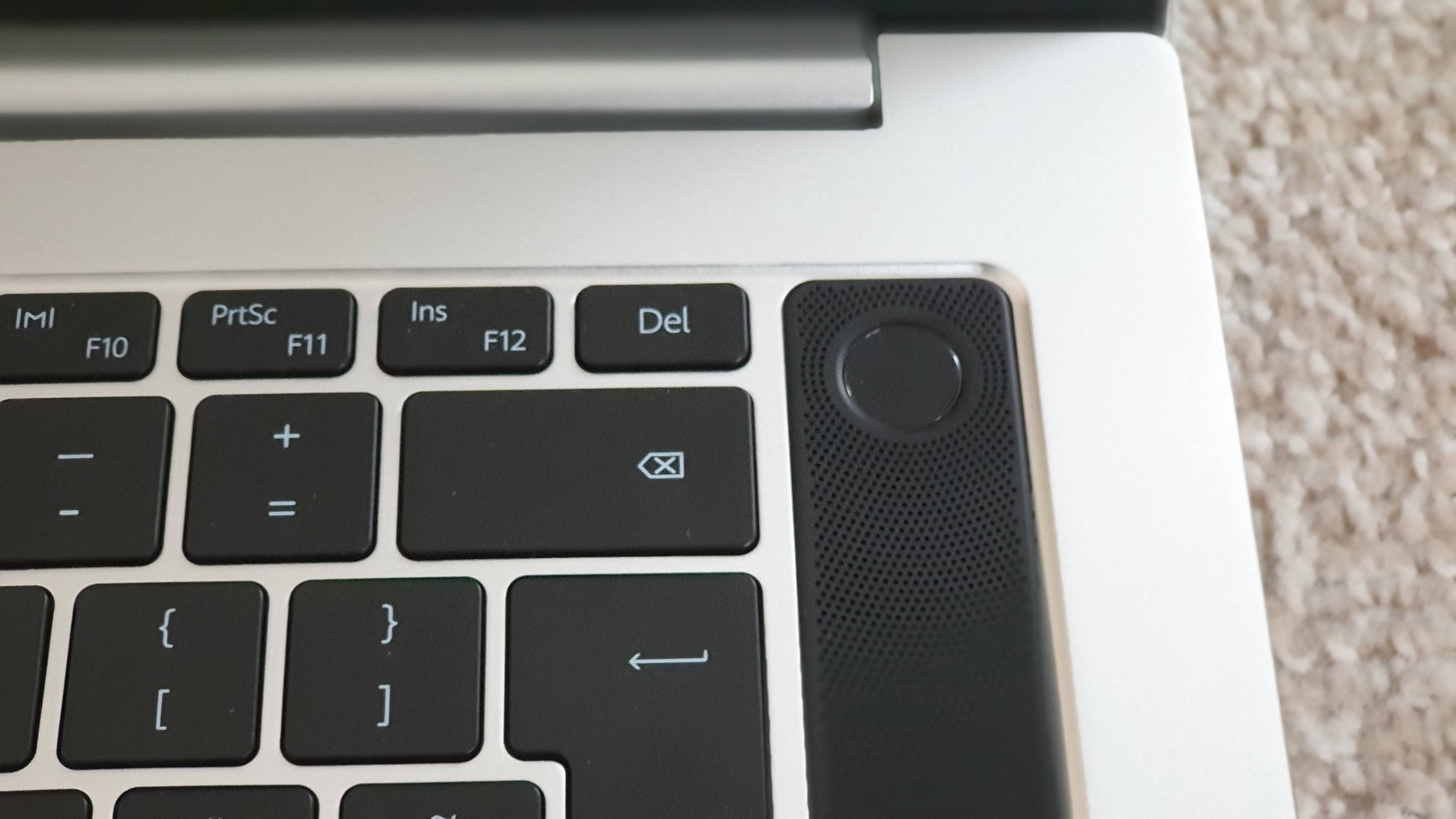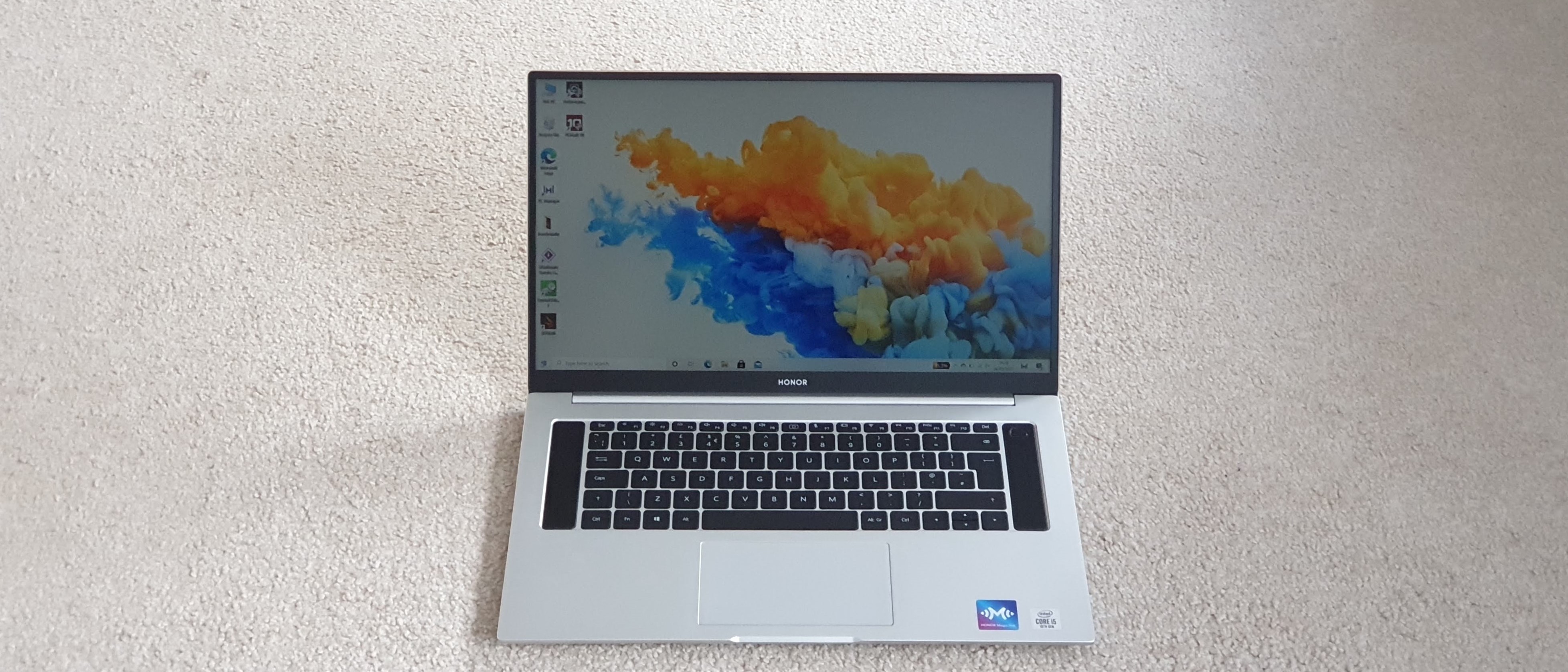TechRadar Verdict
The Intel iteration of the Honor MagicBook Pro is slower than its AMD counterpart, only marginally. But it is cheaper, significantly cheaper and comes with a better freebie bundle. Overall, it is an excellent, well balanced product with a lot of potential.
Pros
- +
Excellent pricing
- +
Great build quality
- +
Good performance
- +
Speakers firing up
- +
Fingerprint sensor built into power button
- +
Intriguing bundle
Cons
- -
No Thunderbolt 3
- -
Pop up camera
- -
No 802.11ax
- -
No card reader
- -
No numeric keypad
- -
Soldered memory
- -
Smallish battery capacity
Why you can trust TechRadar
Honor, once the rising star that lived in the shadows of Huawei, is now an independent entity in control of its own destiny. Its smartphones sold tens of millions of units worldwide and now that it has cut all ties with its former controlling entity, it is embracing other lucrative verticals.
The MagicBook Pro that we’re reviewing today is a variant of the model that we reviewed back in September 2020, one that swaps the AMD Ryzen processor for a 10th generation Intel Core i5 processor as the main driver and targeting the creative professionals looking for a capable mobile workstation.
Pricing and availability
The MagicBook Pro sells for £749 in the UK at the time of writing with a Honor Magic Mouse and a Honor MagicWatch 2 46mm, a bundle worth just under £160. The laptop is not officially available in the US but plenty of online Chinese retailers will ship it to any territory of your choice. Banggood for example will sell it for as little as $1,196 but you don’t get the free goodies.
- Want to buy tech from online Chinese retailers? Read this first.

Design
This Intel-based MagicBook Pro is a carbon copy of its AMD brethren; you can find more details about its design in our review of the latter. It has a similar footprint to a 15.6-inch display despite sporting a slightly larger 16.1-inch screen. Like so many others, its design philosophy is - at least partly - influenced by Apple and the MacBook Pro.

Hardware
Here are the full specs of the Honor MagicBook Pro (Intel Edition) configuration sent to TechRadar Pro for review:
CPU: Intel Core i5-10210U
Graphics: Nvidia MX350
RAM: 16GB
Screen: 16.1-inch FHD resolution
Storage: 512GB Toshiba KXG60ZN PCIe NVMe SSD
Ports: 1 x USB 3.1, 3 x USB 3.2, 1 x USB-C, audio jack, 1 x HDMI
Connectivity: Intel Wireless-AC 9560, Wi-Fi 5, Bluetooth 5.0
Weight: 1.7kg
Size: 369 x 234 x 16.9mm (H x W x D)
Battery: 56Whr
This MagicBook Pro swaps the 6-core AMD Ryzen for a quad-core Intel Core processor and a discrete Nvidia Geforce MX350 GPU. Therein lies the greatest mystery behind the MagicBook Pro; why this change? In theory, such a move increases the bill of material (and reduces profit margins), resulting in worse overall performance and reducing battery life. But there’s more to it.
The Core i5-10210U CPU is still built on a 14nm manufacturing process (compared to AMD’s 7nm). It has only four cores, two fewer than the Ryzen 5 4600H and 6MB cache, almost half that of its rival. The MX350 GPU comes with 2GB GDDR5 dedicated memory which is one of the few bright spots, cementing its status as an affordable video editing laptop.
The rest of the configuration is similar to the AMD model: Two soldered 8GB memory modules, a Toshiba KXG60ZN 512GB PCIe NVMe SSD and an Intel Wireless-AC 9560 802.11ac (Wi-Fi 5) Wi-Fi card with Bluetooth 5.0. No Wi-Fi 6 here. The battery is a 56WHr model, almost half the capacity of Apple’s or the LG Gram 17.
Sign up to the TechRadar Pro newsletter to get all the top news, opinion, features and guidance your business needs to succeed!

Performance and in use
Here’s how the Honor MagicBook Pro (Intel Edition) performed in our suite of benchmark tests:
Passmark: 5893
Passmark CPU: 19486
CPU-Z: 520.2 (single-thread); 4888.5 (multi-thread)
Geekbench: 1256 (single-core); 7991 (multi-core); 116031 (compute)
3DMark: 9623 (Timespy); 20176 (Firestrike); 32104 (Nightraid); 32425 (Skydiver)
CrystalDiskMark: 3441MBps (read); 3210MBps (write)
Cinebench CPU: 3793
Novabench: 3323
Atto: 3150MBps (read, 256mb); 2870MBps (write, 256mb)
AJA: 2918MBps (read); 2844MBps (write)
Windows Experience Index: 8
In terms of sheer performance, the AMD laptop is unsurprisingly far faster than Intel’s: 50% extra cores give it an unfair advantage even if Intel manages to hold its own on single-threaded tests. Things are quite different when GPU intensive benchmarks are involved; Geekbench Compute, Passmark and 3DMark show the value of having a discrete GPU, even one that’s several generations old.
What surprised us even more was the battery life: It was - as expected - shorter than its AMD alter ego but only just. At 416 minutes (compared to 421 minutes for the Ryzen version of the Honor MagicBook Pro), it should be amply sufficient for most applications.
The fans kicked in under load during the most intense parts of our benchmarks so it can be a bit boisterous. Honor’s literature mentions that six temperature sensors and a cooling-fan motor with higher spin rates helps cool the laptop more effectively. The keyboard, the display and the webcam performance are described in more detail in the AMD review from September 2020, so no need to repeat it here. Note that the laptop comes with a one-year warranty and runs Windows 10 Home.

The competition
The obvious competitor to this MagicBook Pro (Intel edition) is the MagicBook Pro (AMD edition). The latter is more powerful in most tasks but is also £100 more expensive at £850. It does come with a watch, a mouse and a pair of wireless earphones.
The other candidate is the Apple MacBook Pro, however, in that case, we’re comparing Oranges to … Apples. The launch of the M1 silicon and the tantalizing prospects of running one of the fastest ever produced mainstream laptops will make most geeks salivate. But this is Apple, with the quirks associated with the MacOS ecosystem. Not everyone will want to adjust to life away from Windows.
Elsewhere, there’s a paucity of 16.1-inch laptops that’s glaring: HP has a lonely Pavilion laptop and that’s about it. There’s little appetite from vendors to move away from the ubiquitous 15.6-inch screen, especially given the presence of the 17-inch form factor.
Final verdict
I started this review thinking that Honor made a mistake swapping the AMD processor for an Intel CPU but somehow it worked. The numbers and benchmarks do not lie; adding the Nvidia Geforce MX350 GPU and dropping the price to less than £750 worked wonders. We couldn’t find a single laptop in the UK with a comparable configuration. Not a single one and that’s down to the delicate positioning of the device by Honor.

The rest of our verdict mirrors that of the AMD iteration: the webcam positioning is a good idea gone bad. We’d love to have a Thunderbolt 3 port, a card reader and a numeric keypad. We like the upward firing speakers and the build quality as well as the freebies and the fingerprint sensor.
For the next iteration (assuming there’s one) we’d love to see a 100WHr battery, Wi-Fi 6, a 16:10 display, a beefier CPU and GPU, 32GB of RAM and a pair of NVMe SSD in RAID-0 configuration. If Honor wants the MagicBook Pro to move to the next level, it needs to up its game and not just play on bundles and pricing.
- We've also highlighted the best business laptops

Désiré has been musing and writing about technology during a career spanning four decades. He dabbled in website builders and web hosting when DHTML and frames were in vogue and started narrating about the impact of technology on society just before the start of the Y2K hysteria at the turn of the last millennium.
